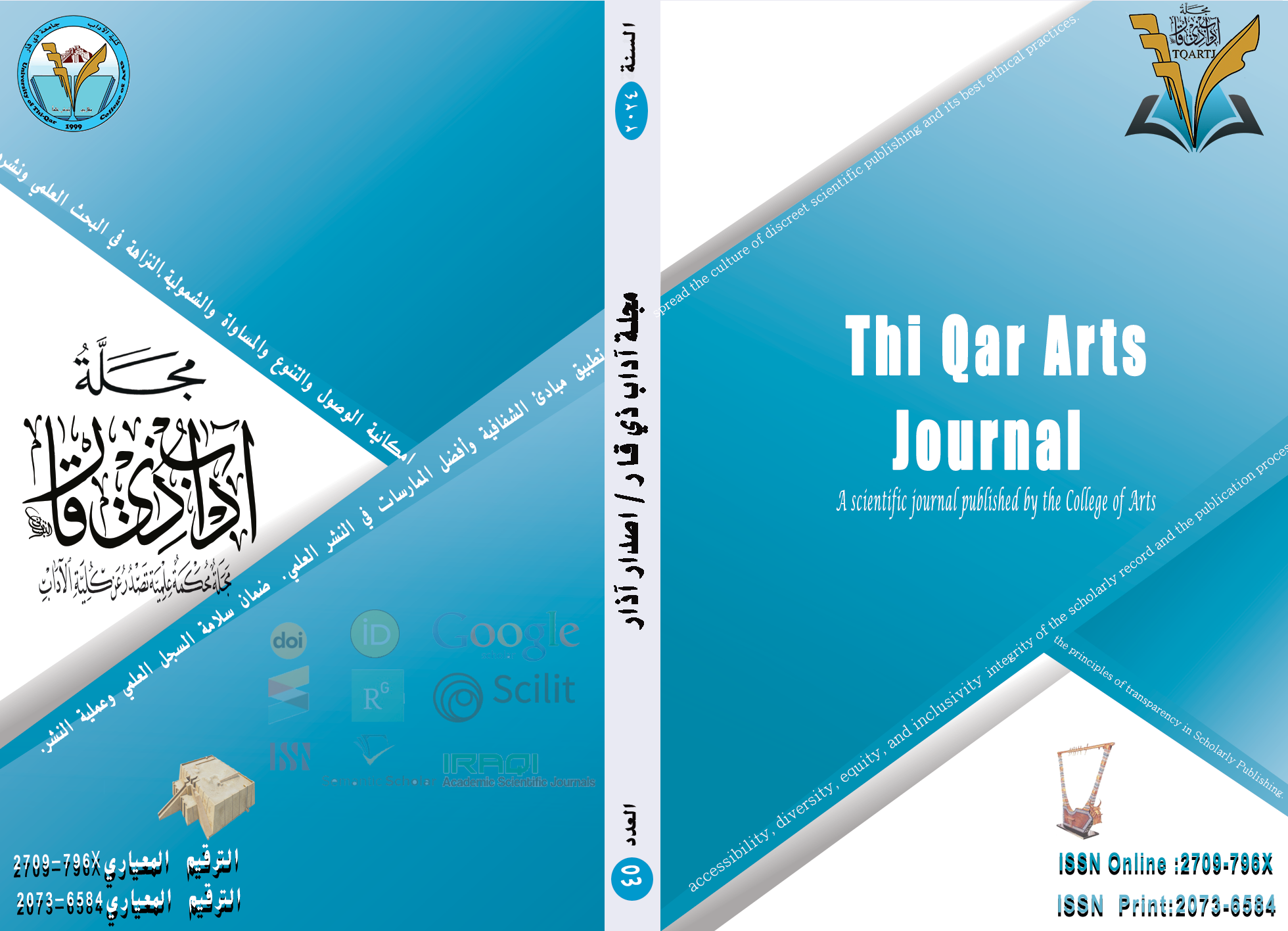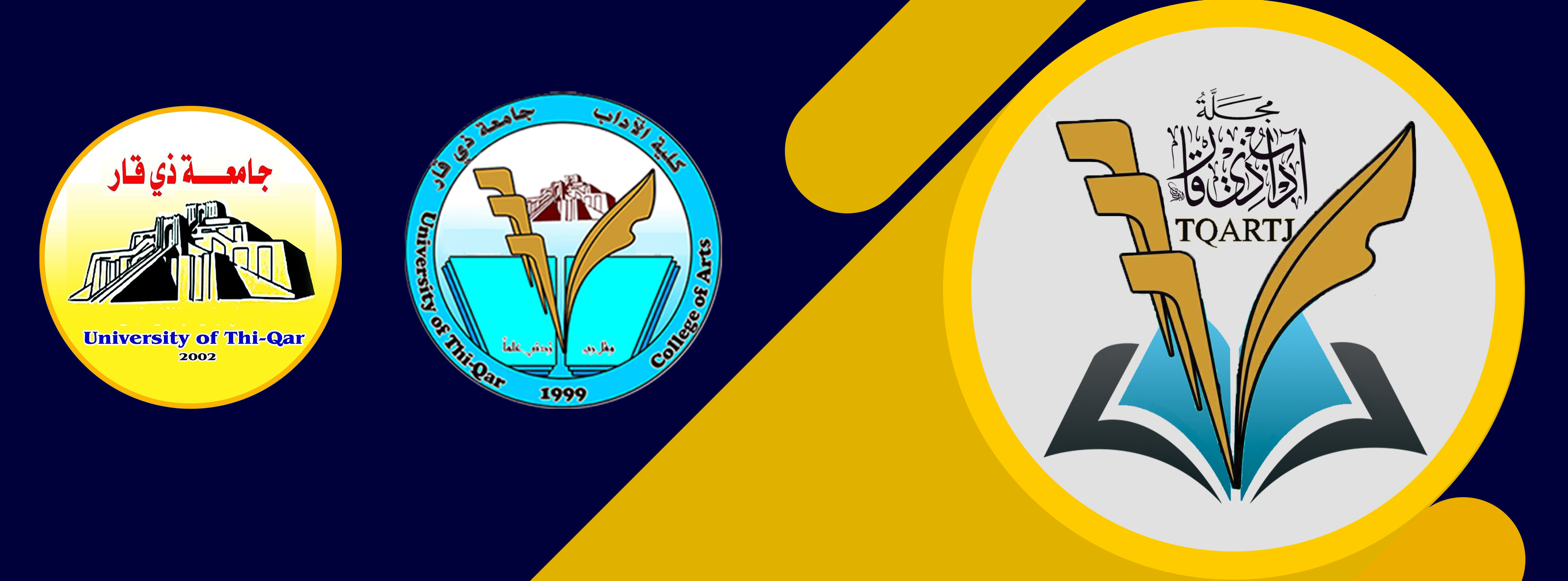Character Building in the Novel (The Hedgehogs on a Hot Day)
DOI:
https://doi.org/10.32792/tqartj.v3i45.560Keywords:
Character, Types, Presentation, DescriptionAbstract
The character in the novel (The Hedgehogs on a Hot Day) by the author (Falah Rahim) played an important role; it was the beating heart of the novel as it created the events and gave vitality to time and place. The author utilized all techniques well and artistically in drawing the characters, striving to make them lively and lifelike, not cartoonish figures moved at the author’s whim. The main character is the narrator (Salim Kadhim), who narrates in the first person, tilting the novel towards an autobiographical approach. As for the secondary characters, some were supportive while others opposed and struggled against the main character. The author was able to clarify the dimensions of the character in the novel through external features, psychological descriptions, as well as their thoughts, beliefs, and social backgrounds. The author presented his characters in two ways: the first is reporting, which depends on drawing the character from the outside, such as appearance and clothing; the second is revelation through what others say about a character, as well as dialogue—both the external dialogue, which is the best means of introducing the character, and the internal dialogue, through which the character reveals all their feelings and emotions, and discloses their behavior and actions in response to events in reality.
Downloads
References
Sources and References
A- Sources:
“The Hedgehogs on a Hot Day,” Falah Rahim, Dar Al-Kitab Al-Jadid United, Beirut, 1st edition, 2012.
B- References:
“Trends in Modern Egyptian Story,” Sayed Ahmed Al-Nassaj, Dar Al-Maarif, Egypt, 1977.
“Structure and Significance in the Novels of Ibrahim Nasrallah,” Ahmed Marshed, Arab Institute for Studies and Publishing, Beirut, 1st edition, 2005.
“Narrative Text Analysis (Techniques and Concepts),” Mohammed Bouazza, Arab World for Sciences, Dar Al-Aman, Rabat. (n.d.)
“Aesthetics of Narration in the Novelistic Discourse,” Ghassan Kanani, Dar Majdalawi for Publishing and Distribution, Amman, Jordan, 1st edition, 2006.
“Narrative Discourse (A Methodological Search),” Gerard Genette, trans. Mohammed Al-Mutasim and Jalil Al-Azdi, Omar Al-Hali, Dar Al-Ikhtilaf Publications, Algeria, 3rd edition, 2003.
“The New Arab Novel and Language Issues,” Abdul Majid Al-Haseeb, World of Modern Book, Jordan, 1st edition, 2014.
“Semiotics of the Narrative Text,” Ahmed Al-Murtaji, Eastern Africa Printing, Casablanca, 1987.
“Semiology of Novelistic Characters,” Philippe Hamon, trans. Said Benkrad, Dar Al-Kalam, Rabat, 1st edition, 1990.
“Personality: Its Types, Disorders, and the Art of Dealing with It,” Saad Riyad, Iqraa Publishing and Distribution Foundation, Beirut, 2005.
“Poetics,” Tzvetan Todorov, trans. Shukri Mabkhout and Raja Ben Salama, Dar Tubqal for Publishing, Casablanca, 2nd edition, 1992.
“The World of the Story,” Bernard Di Foto, trans. Dr. Mustafa Mohammed Hadara, World of Books, Franklin Printing and Publishing Foundation, Cairo - New York, 1969.
“The Art of Poetry,” Aristotle, trans. Matta bin Yunus, verification: Shukri Abbad, Maghreb Company of United Publishers, Casablanca, 1st edition, 1986.
“The Art of the Story,” Mohammed Youssef Najm, Dar Sader, Dar Al-Shorouk, Beirut - Amman, 1st edition, 1996.
“The Storyteller and Reality,” Yassin Al-Nasir, Dar Al-Sa’a Printing, Baghdad, 1975.
“Classicism and the Artistic Foundations of Drama,” Mohammed Mandour, Dar Nahdet Misr for Printing and Publishing, Cairo, (n.d.) (n.d.).
“The Pleasure of the Text,” Roland Barthes, trans. Munther Ayachi, Center for Civilizational Construction, Syria, 1st edition, 1992.
“Lisan Al-Arab,” Ibn Manzoor, Dar Beirut, 1st edition, 1955.
“Introduction to Structural Narrative Analysis,” Roland Barthes, trans. Mohammed Barada, Modern Knowledge Printing, Rabat. (n.d.)
“Introduction to the Theory of the Story Analysis and Criticism,” Jamil Shaker, Samir Al-Marzouki, General Directorate of Cultural Affairs, Baghdad, (n.d.), 1986.
“Morphology of the Folktale,” Vladimir Propp, trans. Ibrahim Al-Khatib, Maghreb Company of United Publishers, Casablanca, 1st edition, 1986.
“Towards a New Novel,” Alain Robbe-Grillet, trans. Mustafa Ibrahim Mustafa, introduction: Louis Awad, Dar Al-Maarif, Egypt
“Modern Literary Criticism,” Mohammed Ghoneimy Hilal, Dar Al-Thaqafa and Dar Al-Anouda, Lebanon, 2nd edition, 1972.
“Applied and Analytical Criticism,” Adnan Khaled Abdullah, General Directorate of Cultural Affairs, Baghdad, 1st edition, 1986.
“Criticism and Signification (Semiotic Analysis of Literature),” Mohammed Azzam, Dar Al-Thaqafa Publications, Syria, 1996.
Research and Periodicals:
“Character,” Tzvetan Todorov, trans. Dr. Mohammed Fikri, National Guard Magazine, issues (189 – 190), 1998.
“Scientific and Artistic Rules for Writing Dramatic, Cinematic, Television, and Theatrical Texts,” Linda Seger, trans. Adib Khadour, Media Library Series, issue (34), 2008.
Downloads
Published
How to Cite
Issue
Section
Categories
License
Copyright (c) 2024 Azhar Ali Assi

This work is licensed under a Creative Commons Attribution 4.0 International License.
The journal applies the license of CC BY (a Creative Commons Attribution International license). This license allows authors to keep ownership of the copyright of their papers. But this license permits any user to download, print out, extract, reuse, archive, and distribute the article, so long as appropriate credit is given to the authors and the source of the work. The license ensures that the article will be available as widely as possible and that the article can be included in any scientific archive.












